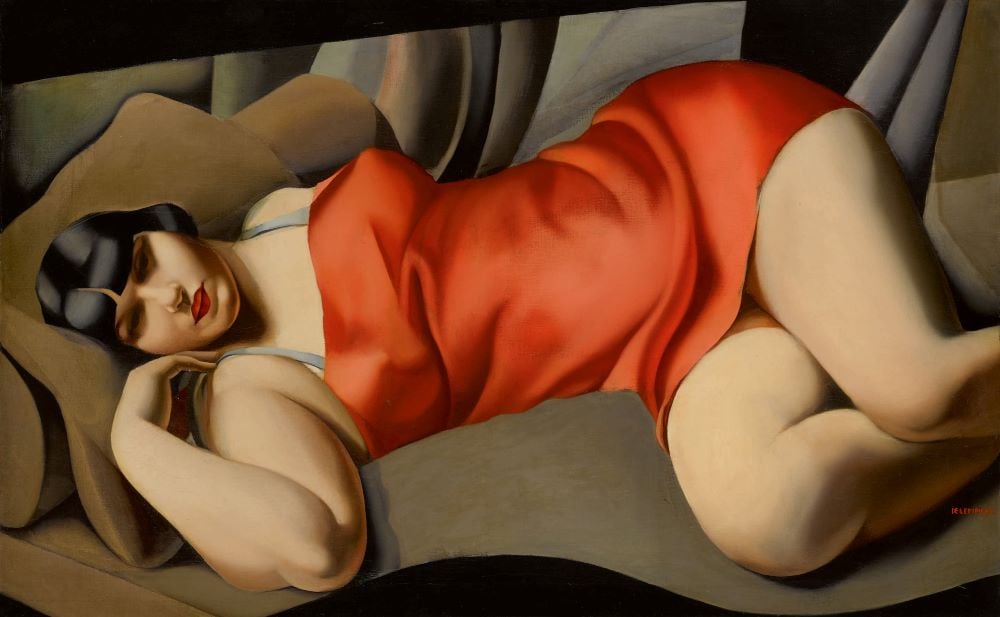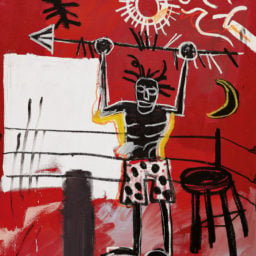In an auction season with few big-name private collections, Christie’s and Sotheby’s have fallen back on touting individual highlights by the usual blue-chip suspects: Claude Monet, Pablo Picasso, Alberto Giacometti, and Paul Signac, among others.
Works by each of these artists made an appearance at tonight’s solid but unspectacular evening auction of Impressionist and Modern art at Sotheby’s New York. All told, the sale brought in $209 million, compared with overall presale expectations of $178.8 million to $254.5 million. Of the total 50 lots on offer, 42, or 84 percent, were sold. (Two other works were withdrawn from the sale before it started.)
But bidding for the priciest lots was often lackluster. One major Picasso, Nus, squeaked by at $8.8 million, well under its low estimate of $12 million, even after auctioneer Oliver Barker lingered on the lot for what seemed like an extended few moments before hammering it down to its lone bidder. And when bidding wars did break out, they tended to be for lower-priced, more unassuming lots.
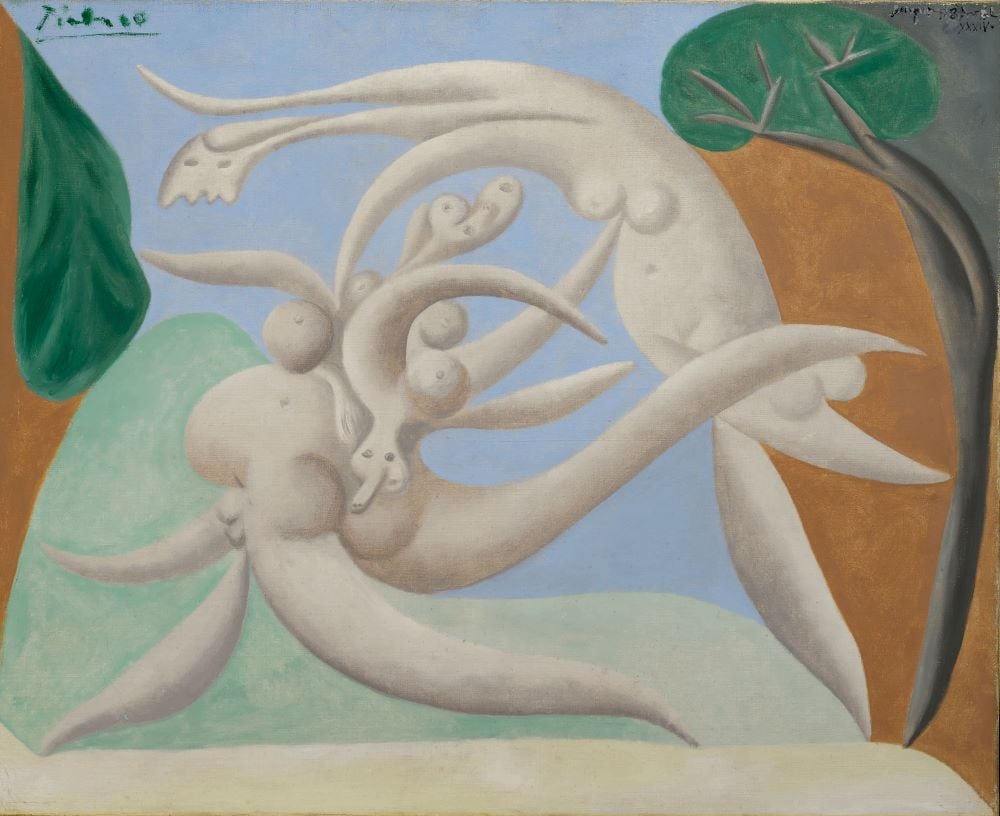
Pablo Picasso, Nus (1934). Image courtesy of Sotheby’s.
Even in its opening stages, it seemed like it might be a subdued night. Early on in the sale, the lights suddenly went dim—literally—making it a challenge for Barker to see who was bidding in the room.
What’s more, a phone line being used by Sotheby’s executive Lisa Dennison went dead just as she was chasing an Auguste Rodin limestone sculpture for a client. Barker waited patiently as the line was restored and Dennison’s bidder won the lot against dogged competition from private dealer Philippe Ségalot, who was seated in the room.
Still, despite the minor snafus, the sale—which opened the first major Sotheby’s art auction season under the ownership of Patrick Drahi, the French-Israeli telecoms magnate who bought the 275-year old company for $3.7 billion this past June—had its high points.
An early René Magritte work, La Légende des siecles, outstripped its high estimate, while an auction record was set for a work by Tamara de Lempicka with a painting titled La Tunique rose.
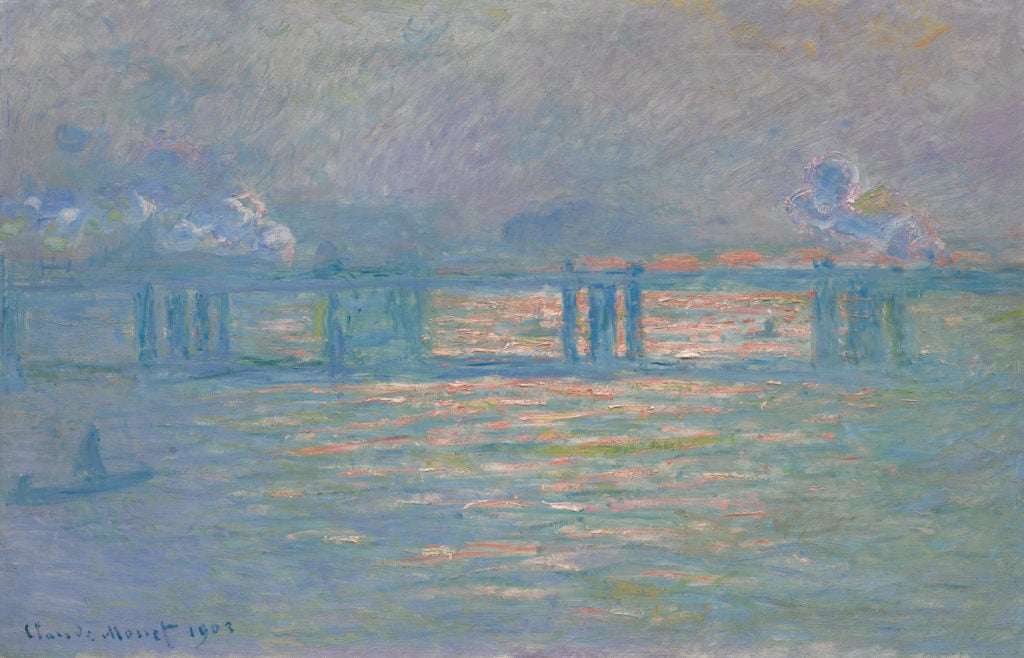
Claude Monet, Charing Cross Bridge (1903). Courtesy of Sotheby’s New York.
The top lot of the night was Monet’s Charing Cross Bridge (1903), estimated at $20 million to $30 million. The painting was in the collection of Holocaust survivor Andrea Klepetar-Fallek since 1977, when it was purchased from Galerie Beyeler in Basel.
It carried a third-party (or irrevocable) bid, meaning it was guaranteed to sell to an arranged buyer if it did not draw enough interest. But the work drew lots of attention after Barker opened bidding at $15 million, and it was fairly quickly hammered down to a Sotheby’s specialist bidding for a client at $24 million. Including premium, the final price was $27.6 million.
The subject matter of the picture—a London bridge on a hazy day—may not be as coveted as Monet’s Japanese bridges, Rouen Cathedral paintings, or water lilies, but Sotheby’s vice chairman Brooke Lampley sold it well as “perhaps the greatest Charing Cross Bridge painting by Monet ever to come to the market.” The auction house also noted that the previous high price point for a work in the series was set in 1992 at $4.1 million, which looks like a pittance now.
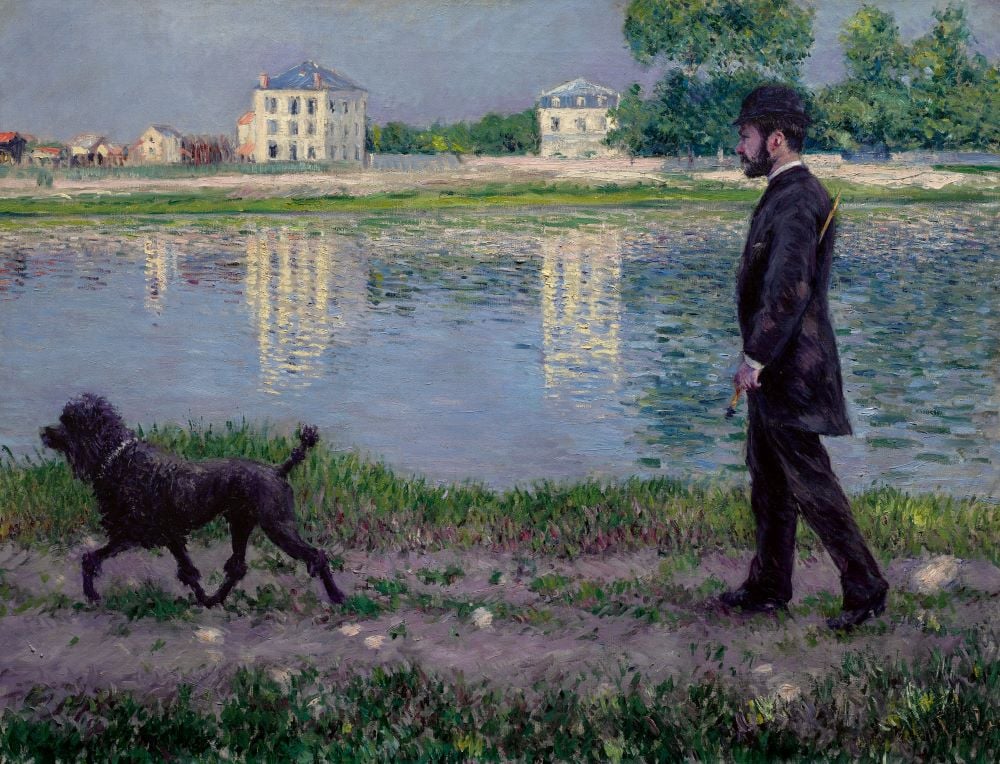
Gustave Caillebotte, Richard Gallo et son chien Dick, au Petit Gennevilliers (1884). Image courtesy of Sotheby’s.
Like Monet’s London scene, the second-priciest lot of the night, Gustave Caillebotte’s riverscape scene Richard Gallo et son chien Dick, au petit-gennevilliers, also had a third-party guarantee. Bidding for the picture, which had never come to auction before, opened at $14 million; it sold right at $18 million, against a presale estimate of $18 million to $25 million. It’s unclear if the apparently lone bidder was also the third-party backer.
Paul Signac’s La Corne d’or (Constantinople), again backed by a third-party bid, sold with little competition for a hammer price of $14 million, against a presale estimate of $14 million to $18 million. (Do you see a pattern forming?) The painting sold to Patty Wong, chairman of Sotheby’s Asia, who was bidding for a phone client.
The Signac work, unlike the Caillebotte, could hardly be called fresh to the market, having appeared twice at auction in the past 11 years. In May 2008, it sold at Christie’s New York for $6.6 million; four years later, it crossed the pond to Christie’s London and sold for twice that, at $13.9 million (£8.8 million). This time around, the bump in value was far lower by comparison: including premium, the final price was $16.2 million.
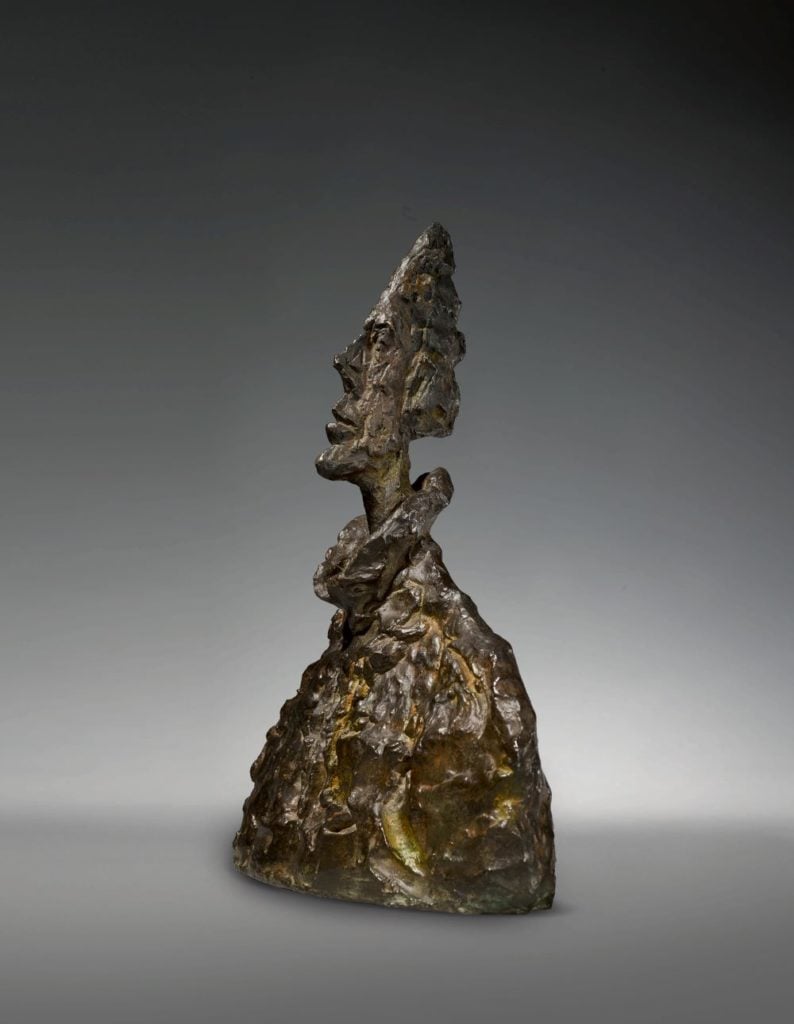
Alberto Giacometti, Buste d’homme (Diego au blouson) (conceived circa 1953; this example cast in 1953 by Susse Fondeur, Paris). Image courtesy of Sotheby’s.
Giacometti was represented by two works in the top end of the sale. Buste d’Homme (Diego au Blouson), which was conceived around 1953 and cast the same year, sold for $14.3 million with premium, easily surpassing its estimate of $6 million to $8 million. The model for the work was the sculptor’s younger brother, Diego. Barker oversaw a protracted bidding war between Lampley and specialist Nick Deimel from roughly $9 million to the hammer price of $12.3 million, when it finally sold to Deimel’s client.
Earlier in the sale, Sotheby’s offered Giacometti’s less typical Quatre figurines sur piédestal (Figurine de Londres version A) with the same estimate as the bust. It was conceived between 1950 and 1965; the base was cast in 1950, and the figurines were cast in 1966.
Bidding opened at $5 million, and though it seemed like the lot was about to fail, two paddle-wavers—Montreal-based dealers Robert and Alice Landau—suddenly brought the auction back to life when they leapt in with a $5.5 million bid after Barker stalled at $5.4 million trying to avoid a pass or buy-in.
On his way out, Robert Landau told Artnet News: “It’s a fabulous piece, and it was for no money, so we took advantage.” Alice added: “People kept telling us how good of a deal we got.”
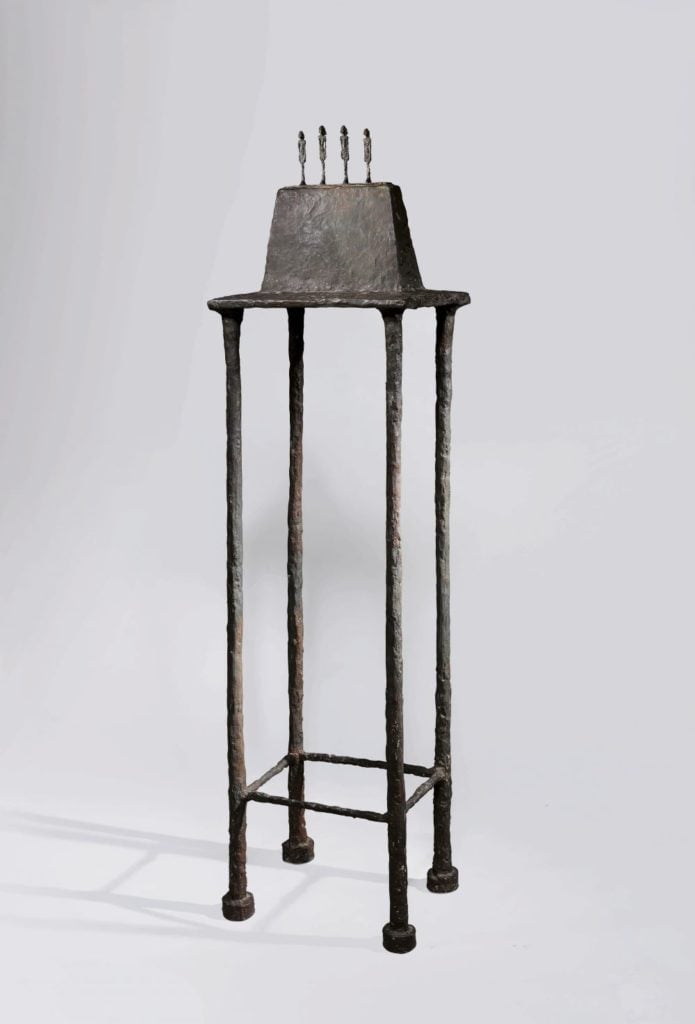
Alberto Giacometti, Quatre figurines sur plédestaI (conceived in 1950–65; the base cast in 1950 and the figurines cast in 1966. ) Image courtesy of Sotheby’s.
Another noteworthy bout of competitive bidding came late in the sale when de Lempicka’s La Tunique Rose, a languid portrait of a reclining woman in a red dress, sparked a two-way bidding war, again between two Sotheby’s specialists bidding for clients on the phone.
Barker opened the bidding at under $6 million, and the work hammered down at $11.3 million, or $13.3 million with premium. That broke the record for the artist, which was set one year ago at Christie’s New York when La Musicienne sold for just over $9 million with premium. Irina Stepanova, a Sotheby’s specialist in Moscow, won the work for a client.
Yet among the star lots that disappointed was Picasso’s Nus (1934), a Surrealist-style intertwining of nudes that was estimated to sell for between $12 million and $18 million. When it was last offered on the auction block in 1997 at Sotheby’s New York, it hammered down for $5.5 million. Tonight, the final price was $9.9 million with premium to the aforementioned lone bidder.
Among the buyers at the sale spotted by Artnet News were dealer Christophe Van de Weghe (who was the underbidder on the first lot on offer, Picasso’s Homme enlevant une femme) and art advisor Nancy Whyte, seated in the room and speaking to a client on a cellphone. She won Magritte’s La Légende des siecles for a hammer price of $7.3 million ($8.6 million with premium) against competition from Sotheby’s specialists Gregoire Billault and Samuel Valette, bidding for their respective clients.
Charles Stewart, who recently replaced Tad Smith as Sotheby’s CEO, was also present in the auction room tonight.
—Additional reporting by Nate Freeman
